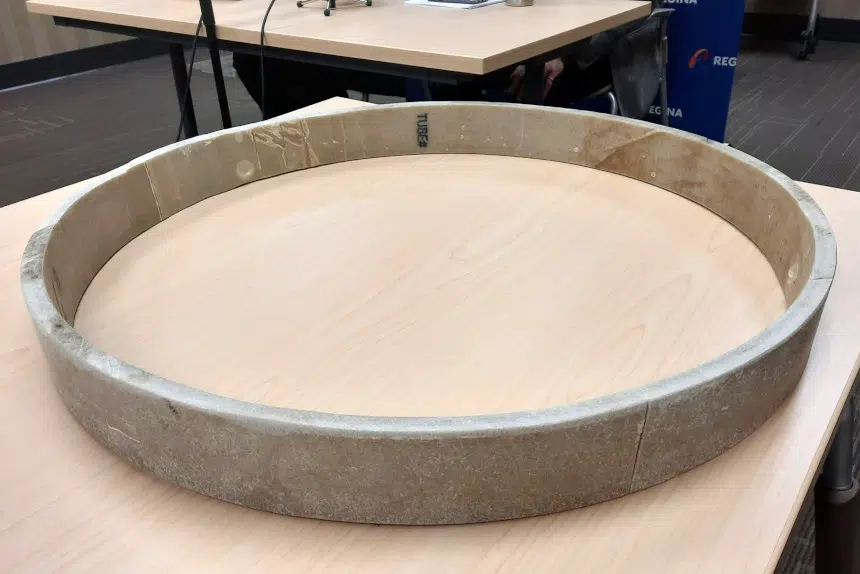Starting Monday, parts of Arcola Avenue and roads leading up to the main thoroughfare will be restricted so one of the main sewer lines in the city can be relined.
“What we want residents to understand is that wastewater is extremely important for the city to function and for residents to live their daily lives,” Kurtis Doney — the city’s director of water, waste and environment — said Thursday.
The pipe served about 30,000 people in southeast Regina, which amounts to about 15 per cent of the city, according to Doney. The relining project will extend the life of the pipe for an estimated 50 years.
The pipe will have to be flushed out and cleaned to insert the new lining, so a bypass for the sewer line will have to be established. While the work is happening, people will be able to flush their toilets and do laundry.
But running the bypass, as well as some of the work being done near the roadway, will require some lane restrictions and slowdowns on Arcola and other roads during the project. The restrictions will change as the work progresses.
- Monday — Daytime restrictions on Arcola, westbound lanes near Prince of Wales Drive.
- Tuesday — Overnight restriction on Arcola westbound closed, two-way traffic on eastbound lanes between Prince of Wales Drive and Doan/Edinburgh Drive.
- Wednesday to Oct. 7 — Ramp installed in the Arcola westbound lanes between Prince of Wales Drive and Doan/Edinburgh Drive, no lane restrictions.
- Oct. 7 for about four weeks — Various restrictions as the work progresses.
“We understand these traffic restrictions will be a concern, however, we thank residents for slowing down in construction zones and ensuring the safety of workers,” said Doney.
Doney explained the relining of the pipe instead of digging up the road to replace the pipe is 60 to 70 per cent cheaper (the project will cost about $3.6 million), will take six to seven weeks instead of one to two years, and will extend the life of the pipe for an estimated 50 years.
Doney said when the work starts, the city will keep sewage out of the pipe and clean it.
“After the pipe is clean, there’s a large fabric tube that’s inserted into the wastewater manhole one by one, then either steam or hot water is used to cure and solidify the tube into a new rigid pipe inside the old one,” said Doney.
As that happens, Doney said there can be a chemical smell in the area but it dissipates quickly.
Once the lining is cured, it hardens and becomes the pipe within the old pipe.
Doney said the timing of the work starting at the end of summer and beginning of fall is strategic.
“We do not do this work during the peak of the summer where there is the potential of large rainstorm events. So we make sure that that risk is reduced as we enter the fall,” said Doney.
If it snows before the work is over, Doney said the work could still continue; it wouldn’t stop unless temperatures got below about -5 C.
There will be generators running in the area 24/7 to keep the pumps going, but Doney said they’re further away from houses so noise isn’t as much of a concern here as it has been in other similar projects.
People living in the area will get communication from the city about what’s happening and what kind of impacts they can expect.











